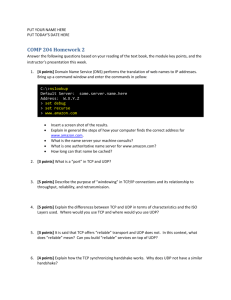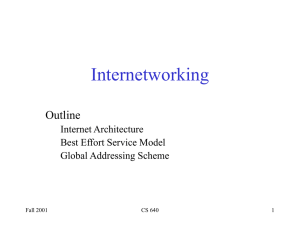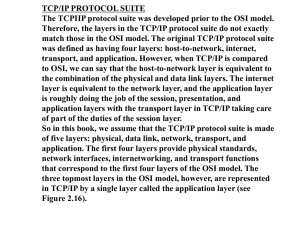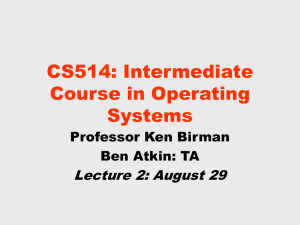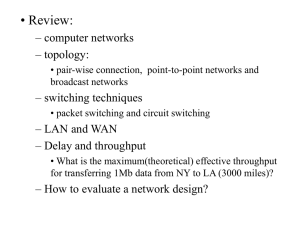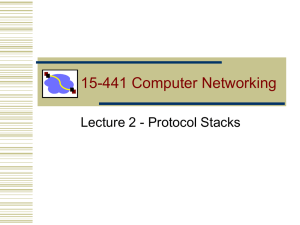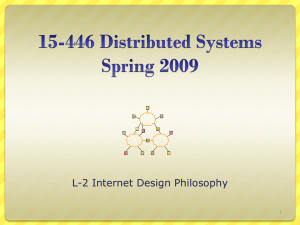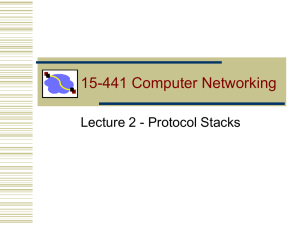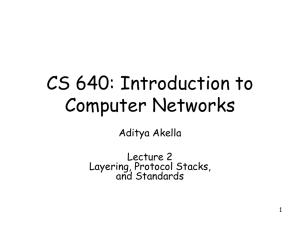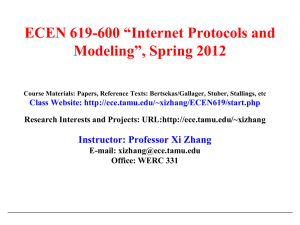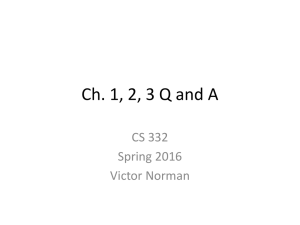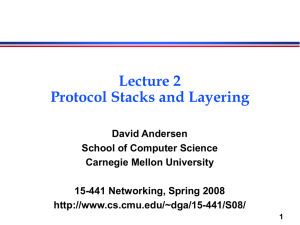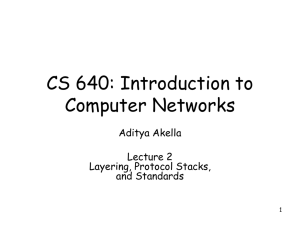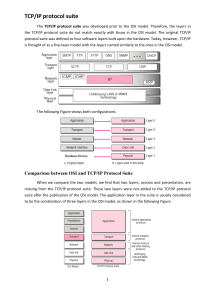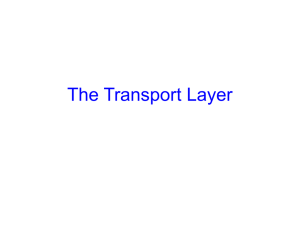243-B STOCK - St.Joseph's College
advertisement
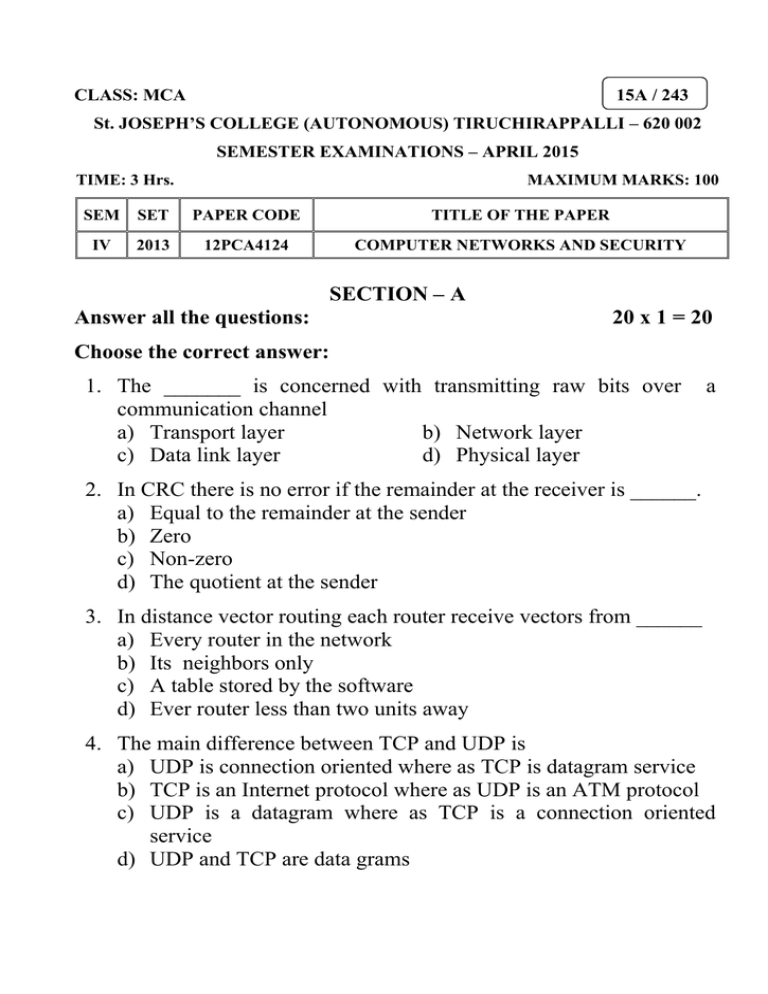
CLASS: MCA 15A / 243 St. JOSEPH’S COLLEGE (AUTONOMOUS) TIRUCHIRAPPALLI – 620 002 SEMESTER EXAMINATIONS – APRIL 2015 TIME: 3 Hrs. MAXIMUM MARKS: 100 SEM SET PAPER CODE TITLE OF THE PAPER IV 2013 12PCA4124 COMPUTER NETWORKS AND SECURITY SECTION – A Answer all the questions: 20 x 1 = 20 Choose the correct answer: 1. The _______ is concerned with transmitting raw bits over communication channel a) Transport layer b) Network layer c) Data link layer d) Physical layer a 2. In CRC there is no error if the remainder at the receiver is ______. a) Equal to the remainder at the sender b) Zero c) Non-zero d) The quotient at the sender 3. In distance vector routing each router receive vectors from ______ a) Every router in the network b) Its neighbors only c) A table stored by the software d) Ever router less than two units away 4. The main difference between TCP and UDP is a) UDP is connection oriented where as TCP is datagram service b) TCP is an Internet protocol where as UDP is an ATM protocol c) UDP is a datagram where as TCP is a connection oriented service d) UDP and TCP are data grams 5. What is a Firewall in computer network? a) The physical boundary of network b) An operating system of computer network c) A system designed to prevent unauthorized access d) A web browsing software Fill in the blanks: 6. A device that accepts a serial stream of bits as input and produces a modulated carrier as output is called______. 7. Protocols in which the sender sends one frame and then waits for an acknowledgement before proceeding are called______. 8. The independent packets of the connectionless organization are called______. 9. A TCP connection is a ______stream. 10. They ______ are built to handle different protocols, especially at the application layer. State True or False: 11. A set of layers and protocols is called network architecture. 12. Protocols in which the sender sends one frame and then waits for an acknowledgement before proceeding are called wait and stop. 13. The independent packets of the connectionless organization are called virtual circuit. 14. The basic protocol used by TCP entities is the sliding window protocol. 15. Fire walls can be installed to keep packets in or keep packets out. Answer in one or two sentences: 16. What are the uses of networks? 17. What is bit stuffing? 18. What are the different classes of routing algorithm? 19. What is transport entity? 20. What is private key encryption? SECTION – B Answer all the questions: 5 x 7= 35 21. a. Draw the diagram and explain how layers, protocols and interfaces are arranged in a protocol hierarchy. OR b. What are the different transmission media used for network communication? Explain briefly. 22. a. With an example show how cyclic redundancy check is done. OR b. Describe the protocol used for a noisy channel. 23. a. Draw out the comparison of virtual circuit and datagram subnets. OR b. Explain the shortest path routing algorithm with an example. 24. a. What are the basic design issues to be noted in transport layer? Explain. OR b. Give a detailed comparative discussion between TCP and UDP. 25. a. What is Firewall? Explain in detail. OR b. Give a detailed description about the intruder detection. SECTION – C Answer any THREE questions: 3 x 15 = 45 26. Describe the OSI seven layers model. Name each of the layers in the model and draw a diagram that shows the ordering of these layers. 27. Explain the concept of a sliding window protocol using go back n. 28. What is Congestion? What are the policies that are used to prevent congestion? Explain any one of the congestion algorithm in detail. 29. What are the elements of transport protocols? Explain. 30. What are different types of attacks? Explain in detail. **************

